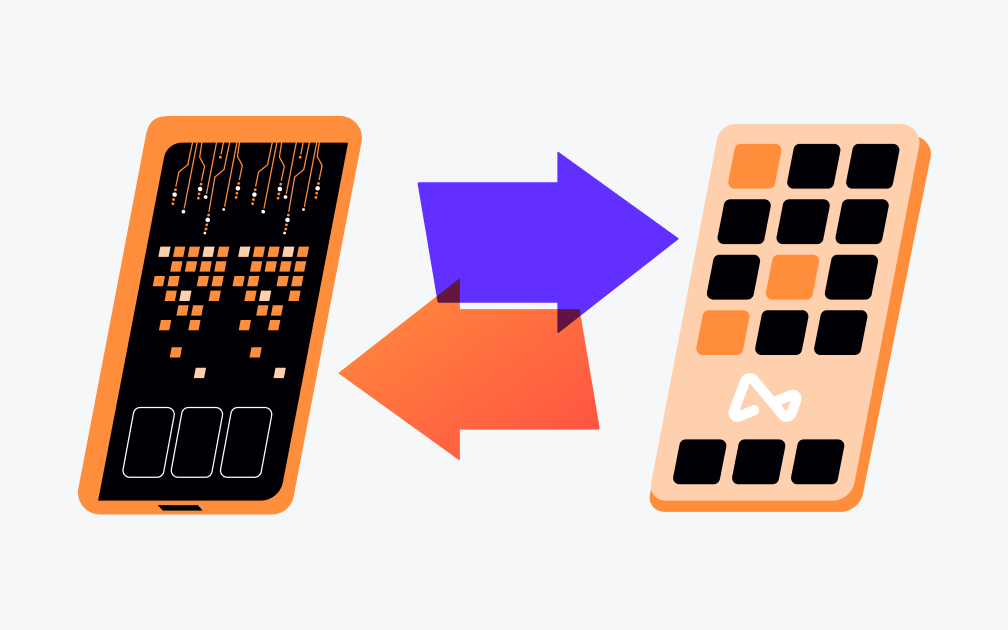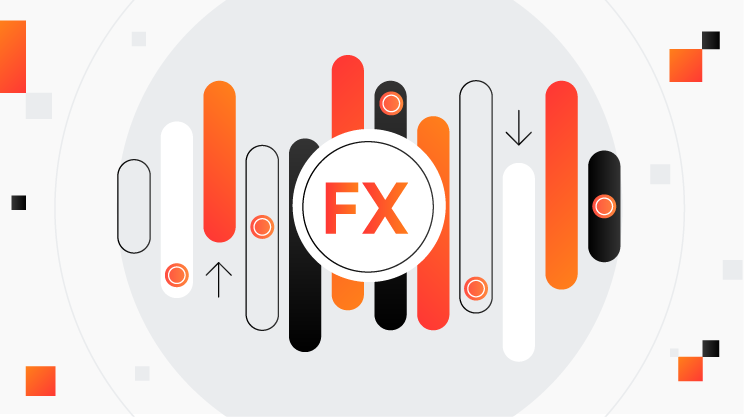What are payment rails? How they work and the types of payment rails

Key takeaways:
Payment rails are the underlying infrastructure that connects banks and financial institutions to enable the secure and efficient transfer of funds.
Companies with local bank accounts can send and receive money within the same country more quickly. This can also help them do business around the world at a lower cost.
Common payment rails include local ones, like Automated Clearing House (ACH) and Single Euro Payments Area (SEPA), as well as global ones, like Society for Worldwide Interbank Financial Telecommunication (SWIFT).
With more businesses sourcing materials and services internationally, cross-border payments could reach US$290 trillion by 2030,1 highlighting the increasing scale of global business transactions.
Financial infrastructures such as payment rails are essential for the smooth movement of funds between parties. Whether managing domestic payments or handling cross-border transfers, you'll need to use these payment rails to move money to your recipient.
In this post, you’ll learn what a payment rail is, how it works, the types of payment rails available, and tips to help you choose the best one for your business needs.
What is a payment rail?
A payment rail is the underlying infrastructure that allows money to move between a payer and a payee, allowing financial transactions to travel between businesses, individuals, and financial institutions. It allows businesses to move money seamlessly both domestically and internationally.
Businesses, particularly those with global aspirations, rely on payment rails to facilitate smooth cross-border transactions to support international trade. These rails support a multitude of payment methods – from traditional bank transfers to credit card payments and digital wallets – making it easier for businesses to connect with customers worldwide.
Over the years, many businesses now opting for local payment rails instead of international ones. This shift was driven by the desire for faster, more cost-effective transfers. Local payment systems often have lower fees and faster processing times. This can help you manage the costs of cross-border transactions and improve your financial health.
Eliminate fees by transferring like a local.
How do payment rails work?
Payment rails are the underlying infrastructure that connects banks and financial institutions to enable the secure and efficient transfer of funds. When a payment is initiated, the payment rail acts as the intermediary, facilitating every stage of the transaction – including verification, processing, authorisation, clearing, and settlement.
Various payment rails cater to different needs. Bank transfers, for example, are a common payment rail that allows money to move from one bank account to another. Card networks, such as Visa and Mastercard, are another type of payment rail that enables transactions through credit and debit cards.
Each payment rail has its own set of protocols and standards that ensure transactions are processed accurately and securely. Understanding the meaning and capabilities of payment rails can help businesses choose the most appropriate financial solution for their needs.
Types of payment rails
There are different types of payment rails depending on the different payment needs of businesses.
Local payment rails
Speed: | Fees: | ||
|---|---|---|---|
2-3 days | Lower than traditional cross-border methods |
A local payment rail is designed to facilitate transactions within a specific country or region. These systems are typically optimised for domestic use and often process transactions much faster, and usually come with much lower fees. Examples of local rails include Automated Clearing House (ACH) in the United States, Single Euro Payments Area (SEPA) in Europe and UPI (Unified Payments Interface) in India.
These days, fintechs have made it easy for global businesses to utilise local payment rails as though they're local businesses by giving them local currency accounts that help facilitate what would otherwise be an international transfer.
Card rails
Speed: | Fees: | ||
|---|---|---|---|
In seconds | Includes processing fees, which vary by provider |
Card rails are payment infrastructures used by major providers like Visa, Mastercard, and American Express (Amex). They facilitate payments and enable the transfer of funds through debit, credit, and prepaid cards. Card rails are known for their speed and efficiency. Card payments are typically authorised within seconds, making them a preferred choice for quick transactions.
International payment rail
Speed: | Fees: | ||
|---|---|---|---|
1-5 days | Vague and can be expensive if more than one intermediary bank is required |
An international payment rail is a financial system that enables transactions between countries. They are favoured as they have detailed tracking and reporting capabilities, which is important for traceability. The most globally recognised international payment rail is SWIFT (The Society for Worldwide Interbank Financial Telecommunication). It operates as a standardised messaging network, allowing banks worldwide to send and receive payment instructions seamlessly.
The SWIFT payment network can be expensive, with banks charging varying recipient or transfer fees based on the transaction type. The process sometimes involves intermediary banks, which can lead to additional costs and delays.
Real-time payments network (RTP)
Speed: | Fees: | ||
|---|---|---|---|
Real-time | A few cents to US$2 per transaction, depending on the provider |
Real-time payments (RTP) networks are rapidly gaining popularity for their ability to process instant transfers. Examples include RTP in the US, FedNow, and India's Unified Payments Interface (UPI).
These systems enable near-instantaneous money transfers, allowing businesses and consumers to send and receive payments within seconds, regardless of the time or day.
How local payment rails can benefit your business
You can improve your financial operations and profit margins by tapping into local payment rails. For example, a non-European business with European vendors can use SEPA to facilitate quick and affordable transactions within the Eurozone. By using local payment rails, international companies can keep costs low and improve the speed of transfers while reducing foreign exchange risks.
Firstly, local payment rails enable near-instant transfers, reducing the delays associated with traditional international payments. This can significantly reduce the delays associated with international payments.
Additionally, many local payment rails eliminate many of the fees associated with international payment rails, allowing recipients to receive the full amount without deductions.
Our own solution, Airwallex Global Accounts offer local currency accounts in multiple locations managed within a single platform. These accounts provide local banking details for the countries you operate in, allowing you to send, receive, and hold foreign currencies via local payment rails.
For example, you could open USD, GBP, and JPY currency accounts on one platform. Since you can collect and payout in local currencies, you can minimise cross-border payments and speed up transfers by leveraging domestic payment networks.
How to choose the best payment rail
Choosing the best payment rail for your transfers will depend on your goals and budget. Here are some key factors to consider while you’re comparing options:
Speed of transactions
Fast payment processing can improve cash flow and reduce delays, especially for businesses managing supply chains across borders. Local payment rails, for instance, often process transactions within the same day, significantly faster than SWIFT, which can take 1-3 days.
Transparent fees and low costs
Hidden fees and high transfer costs can quickly erode your profit margins, especially for growing businesses managing international transactions. To stay ahead, opt for payment rails that provide clear, upfront pricing with no surprise fees. Transparent pricing makes it easier to budget effectively while avoiding unexpected charges.
Additionally, competitive transfer costs are essential. Fees from systems like SWIFT – including intermediary bank charges and foreign exchange margins – can add up fast. Payment rails that use local payment methods and offer competitive pricing can save you significant money on transactions, helping you reinvest in your business.
Operate globally with Airwallex’s multicurrency business accounts
Many businesses are familiar with payment rails but face hurdles like opaque fees, unpredictable transfer times, and high costs. These issues can strain cash flow and increase operational complexity for a growing company that relies on sourcing materials and services internationally.
Airwallex simplifies payments with faster, low-cost transfers through local payment rails. With a multi-currency business account, receive funds from customers in their preferred currency and say goodbye to costly conversion and transaction fees often associated with traditional payment solutions.
Get the business account built for global growth
Payment rails frequently asked questions
Below are some frequently asked questions related to payment rails:
Are there fees associated with payment rails?
Payment rails usually involve fees for processing transactions, such as interchange fees, network fees, or service charges, depending on the system and parties involved.
What’s the difference between a payment network and a payment rail?
A payment network connects entities (e.g., banks, merchants, and consumers) to facilitate transactions while a payment rail refers to the infrastructure or system that physically transfers funds or payment data.
Can payment rails help lower payment processing fees?
If you have a local currency account, you can receive funds domestically regardless of where your business is located. You can then use those proceeds to pay your suppliers or employees, eliminating unnecessary conversion fees.
Sources:
https://www.foley.com/insights/publications/2024/08/cross-border-payments-market/
Share

Airwallex’s Editorial Team is a global collective of business finance and fintech writers based in Australia, Asia, North America, and Europe. With deep expertise spanning finance, technology, payments, startups, and SMEs, the team collaborates closely with experts, including the Airwallex Product team and industry leaders to produce this content.
View this article in another region:AustraliaEurope - EnglishEurope - NederlandsNew ZealandSingaporeUnited KingdomUnited States
Related Posts

What is the SWIFT banking and payment system? How it works in 3 s...
•6 minutes

